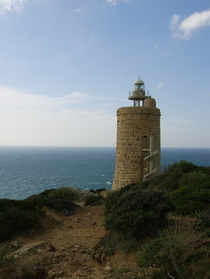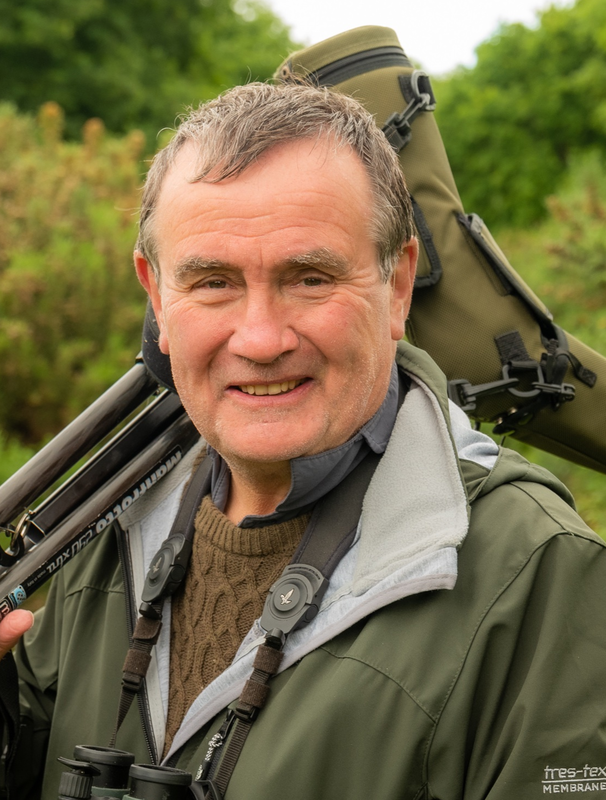 Sierra San Bartolome from near the venta on the N340
Sierra San Bartolome from near the venta on the N340 Heading towards El Lentiscal from the N340 it's difficult to ignore the hulking bulk of the Sierra San Bartolome (a) to your left. This impressive craggy limestone massif understandably attracts climbers, but it is often also the target of spiralling flocks of White Storks. The views across to Africa from here rival or even better those from the Sierra de la Plata; mainly because this great mass of limestone isn't in the way! The minor roads and footpaths here are worth exploring too since Rufous Bushchat has been seen here. This area has its own minor place in ornithological history as the southern face of the rocky extrusion was where Griffon Vultures were first photographed at the nest in Europe. The account of this trip by a trio of politically naive undergraduates on the brink of Spain's Civil War makes fascinating reading. How did they manage to haul a hefty half-plate camera into position and what would they have given for one of today's mega-zoom digital cameras? It also serves to remind us of the debt we all owe to modern field guides (Peterson wasn't published for another twenty odd years). Above all it's extraordinary just how ill-informed a party of well educated Britons were about the state of Spain in the 1930s when radio was in its infancy, TV a mere dream and the internet simply unimaginable! If you'd like to know more just search online for a copy of the “Quest for a Griffon” by Robert Atkinson (Pub. 1938) - it's well worth reading.
 Cueva del Moro (top left)
Cueva del Moro (top left)  Little Swifts - a principle target here ....
Little Swifts - a principle target here ....  The hide .....
The hide .....  The lighthouse at Punta Carmarinal
The lighthouse at Punta Carmarinal 





 RSS Feed
RSS Feed
